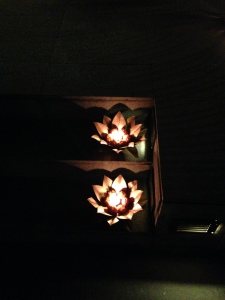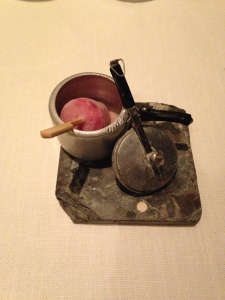For three days, at home, it had been a real flurry. From floor to ceiling, the whole family (siblings, parents, grandmother) is working hard to clean the three-floor house … Except me ! I am too busy observing the glittering neighbor’s garlands in the twilight. All parts have been thoroughly scrubbed, and the room I share with my little brother is no exception. “Alisha* ! rumble grandmother
All parts have been thoroughly scrubbed, and the room I share with my little brother is no exception. “Alisha* ! scold grandmother, hands on hips looking at me with his fierce eye, do not stay slumped so! ”
Groaning, I extricate myself from my comfortable couch and daydreaming. Everyone here is over-excited: tomorrow is Diwali, and nothing is ready!
After four hours of intense efforts installations of lights, that dad ready to press the switch. In a dramatic gesture, he has his loud voice: “Eka … Dō … Tina”
This is the house covered with a light jacket, it radiates! I can not suppress a smile while my sister Nandini (“the one who gives joy”) jumps for joy, shouting and began to run in all directions.
When silence is – finally – income, we begin the traditional ritual that comes every year. Sitting in a circle on the carpet in the living room, we listen to dad explain the origin of this festival:
“Diwali is one of the biggest festivals, celebrated with great enthusiasm all over India. This year, we celebrate the 23 October. It symbolizes the victory of good over evil. According to popular legend (at this point, dad pauses and take a mysterious tone) when Lord Rama returned from his 14 years of exil after defeating Raavana, the people of Ayodhya lighted candles and diya** to celebrate his return to the kingdom.
Diwali, which is actually a contraction of deepavali, means “light table” and symbolizes the victory of light over darkness.”
However, for child and – also for grown-up like me – this is before all the opportunity to skip school. Indeed, Diwali is a holiday not only in India but also in Nepal, Sri Lanka, Guyana, Suriname, Malaysia, Singapore as well as Myanmar, Fiji, Mauritius and Trinidad & Tobago. We also enjoy a lot to gorging with candies and treats and receive gifts from our aunts and uncles that we see in this special occasion.
“It is so beautiful”, whispers my little sister when he finished his presentation. Around us in the dark, the everything is light and magic. Suddenly fuse detonation of firecrackers and fireworks ! The festivities began …
* Indian girl name meaning “protected”
** small special Diwali candles
Main Diwali dishes
The speciality of this festival is is the peda, made from condensed milk, sugar, cardamom and pistachio. The most famous (and popular!) are those of Agra. There are many variations of this dish and other treats that Indian eaten throughout the festival.
– Barfi : prepared with milk and suger topped with pistachio and cardamom
– Gulab : jamun milk, butter and pancake preparation with sugar, fried in oil- Jalebi : flour, yogourt, sugar, cardamom, rose water, fried in oil
– Gogjha : half moon stuffed
– Papri : round and salty treat made of cracked wheat


 Français
Français
